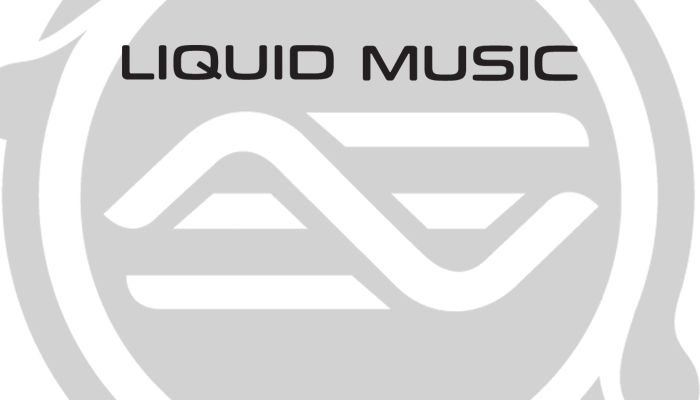LIQUID RHYTHM USER MANUAL
Transport Toolbar
Playback, tempo, loop region controls, quick controls, and the show / hide buttons for all the panels can be found in the Transport Toolbar.
Tip: Playback and tempo will be synced to your host DAW’s transport in plug-in mode and disabled in Liquid Rhythm.
(image for [8.-] 1, 2, 3, 4 on right of page in original manual)
8.1 Tempo and Metronome
Click the Metronome button to activate Liquid Rhythm’s click track in standalone mode. The tempo window displays the current project’s beats per minute (BPM). Adjust the tempo by performing any of the following actions:
- Click the Tempo window and drag the mouse up or down to increase or decrease the tempo value.
- Click the Tempo window and enter a numerical value using your keyboard.
- Click the Tempo window and press the up and down cursors on the keyboard to increase or decrease the tempo.
Tip: Note that in plug-in mode, tempo controls in Liquid Rhythm are disabled.
8.2 Rewind to Start
- Rewind to the beginning of the arrangement.
8.3 Back One Bar / Forward One Bar
- Moves the Playhead back or forward by one bar.
8.4 Play / Stop
- Use these buttons to start and stop playback.
- Key command: [spacebar]
(image for [8.1.-] 5, 6, 7 on right of page in original manual)
8.5 Recording
To record a beat to Liquid Rhythm’s arranger canvas:
- Turn Record Mode on by clicking the Record Mode button on the transport panel.
- Arm a track(s) by pressing the R button on the track header.
- Press the Play button in the transport panel or the [spacebar] to start recording.
Tip: You can arm every track in the arranger by pressing [shift] and clicking the Record button within the track header.
8.6 Playhead Position
The Playhead is the thin vertical line that scrolls to indicate what regions and notes are being read during playback. The Playhead Position window displays where the Playhead is using a three-digit numerical value denoting bars.quarters.sixteenths. For example, 2.3.1 means that the Playhead is at the 1st sixteenth note of the 3rd quarter note of the 2nd bar. To manually adjust the location of the Playhead, either:
- Click on the first value (bar) in the Playhead Position window, enter a number using the numbers on your keyboard, and press [return]/[enter].
- Click on the first value in the Playhead Position window and drag the mouse up or down to increase or decrease the value.
8.7 Follow
- Press the Follow button to scroll through the arranger canvas during playback. When Follow is disabled, the view on the Arrange Page will stay in the same position when the Playhead goes out of view.
- Key command: [command]/[ctrl]+[F]
You can adjust the behavior of the Follow feature. To do so:
- Click Options > Settings or press [command]/[ctrl]+[,] to open the Settings menu.
- Click the Look and Feel tab at the top of the Settings window.
- Click the Playhead Follow Behavior dropdown menu to select from either Scroll or Page.
(image for [8.1.-] 8, 9, 10 on right of page in original manual)
8.8 Loop Mode and Defining a Loop Region
Loop mode enables you to loop a specific section of your beat. Click the Loop Toggle button to enable Loop Mode.
There are two ways to define the Loop Region:
(image to the right of 1-2 text below, more especially 1, in original manual)
- Using the Loop Region bar,
- Resize by clicking the edge(s) of the Loop Region bar and dragging the mouse left or right to extend the region.
- Reposition by clicking the center of the Loop Region bar and dragging the mouse left or right.
- Using the Loop Length and Loop Start windows,
- Resize by clicking the Loop Length window and either dragging the mouse up or down or manually entering a value using the numbers on your keyboard and pressing [return]/[enter] to confirm.
- Reposition by clicking the Loop Start window and either dragging the mouse up or down or manually entering a value using the numbers on your keyboard and pressing [return]/[enter] to confirm.
8.9 Lock Loop to Focus
Once you’ve defined a loop region, click the Lock Loop to Focus button to automatically loop the bar presently selected.
8.10 Drag-and-Drop MIDI
Click-and-drag this button onto another DAW’s arranger to instantly copy / paste the MIDI performance in Liquid Rhythm’s arranger. You can also drag-and-drop to your desktop to save the contents of Liquid Rhythm’s arranger as a MIDI file.
Tip: Since Liquid Rhythm’s instruments are mapped using General MIDI, dropping the resulting MIDI file into another drum/percussion/beat plug-in will have great results!
(image for [8.1.-] 11, 12, 13 on right of page in original manual)
8.11 Note and Velocity
Show the MIDI note being played on an external MIDI control device and its velocity (from 0-27).
(Mike: should that be 0-127?)
8.12 Computer MIDI Keyboard Mode and MIDI Map Mode
(image to the right of text in original manual)
- Enable Computer MIDI Keyboard Mode to use your computer keyboard as a MIDI drum pad with the instruments laid out in a 4×4 grid and mapped according to the General MIDI Standard. Use the image to the right to identify what MIDI note number each key triggers.
- Enable MIDI Map Mode to use an external controller with Liquid Rhythm. Any object with a red border can be assigned to a button, fader, or knob on a hardware controller.
8.13 Show / Hide Panel Buttons
Use these buttons to show and hide either the BeatBuilder or BeatWeaver panels. Alternatively, use the following key commands:
- BeatBuilder: [command]/[ctrl]+[1]
- BeatWeaver: [command]/[ctrl]+[2]
- Library: [command]/[ctrl]+[3]
- Molecule Tools: [command]/[ctrl]+[4]
- Mixer: [command]/[ctrl]+[5]

